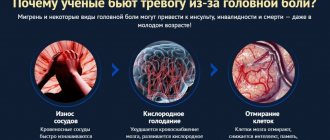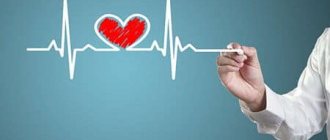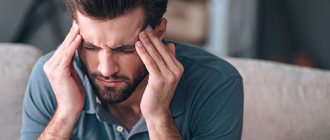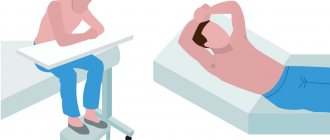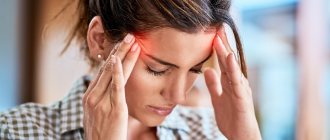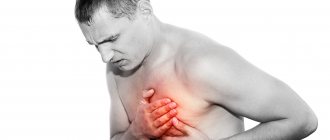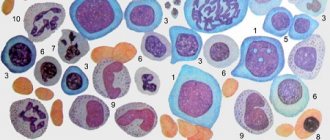A headache in the back of the head is a very unpleasant phenomenon, causing a lot of inconvenience and often limiting performance. The causes of pain in the occipital part of the head can be very different, from diseases of the cervical spine to neuralgic pathologies.
If you don’t know why the back of your head hurts, then this article is for you. It collects the main causes and describes methods of treating headaches in the back of the head. In any case, you must remember: if you have a headache in the back of your head, you should not self-medicate, you need to seek medical help. Of course, we are not talking about isolated cases of pain in the occipital region. As a rule, they are caused by prolonged exposure to an uncomfortable position, stress, extreme hunger, and also due to excessive consumption of foods with caffeine or chemical additives.
Causes of pain in the neck and occipital region
Osteochondrosis is on the list of various diseases expressed through pain in the back of the head and neck.
.
In addition to osteochondrosis, vertebral artery syndrome can cause discomfort. The course of this disease is mainly accompanied by a feeling of increased muscle tension and an altered general condition.
Today, headaches in the neck and back of the head are common in young people. There are enough reasons for this, but the main one can be identified as an incorrect lifestyle. Many people expose themselves to danger voluntarily by being in front of the computer all the time they have free from sleep. Other people are susceptible to illness due to working 8-10 hours, the processes of which take place behind a monitor.
The disease can be localized in any part of the body. A person will complain that the neck and back of the head hurt in the back, left or right. Both acute attacks and less noticeable, but long-term, aches are possible. It is worth noting the sources from which the disease occurs:
- Osteochondrosis;
- Trauma and tumors;
- Meningitis;
- Damaged muscles, ligaments in the muscle corset;
- Rheumatoid arthritis;
- Infectious diseases;
- Muscle spasms that occur as a result of sudden turns of the head;
- Long-term static physical loads;
- “Office” lifestyle, being in uncomfortable positions.
In addition to the listed factors, when the back of the head and neck hurt, the reasons may lie in a variety of serious diseases.
| Hypertonic disease | As a result of this problem, pressure increases, bursting, throbbing pain. |
| Vascular problems | Due to spasm of the arteries located inside or on the surface of the skull, throbbing pain occurs. Discomfort begins at the back of the head but may spread to the forehead. |
| Nervous tension | It worries a person as a result of a stressful state. |
| Overwork | Formed after prolonged mental or physical work and uncomfortable body position. |
| Spondylosis | There is prolonged or constant pain in the neck and back of the head. Sometimes the sensations spread to the eyes and ears. |
| Occipital neuralgia | With this disease, a person complains of recurring pain in the back of the head and neck. Also, discomfort radiates to the temporal region, the ear area. The sensation becomes stronger with normal coughing or sneezing, and also when turning the head. |
| Migraine | Accompanied by throbbing pain in the temple, crown, half of the head. |
These problems are not fatal, but extremely dangerous, and if they are started, the consequences can be more serious than just discomfort.
Diagnostic and treatment methods
The Clinical Brain Institute offers individualized screening programs to help determine the cause of your headaches. Procedures are prescribed only according to indications. Among them are electroencephalography, radiography of the cervical spine, MRI, Doppler sonography, laboratory blood tests and other techniques.
As a result of a complete examination, a diagnosis can be made and treatment can be prescribed. When selecting medications, doctors at our clinic take into account the patient’s general condition and the body’s response to taking medications. The process takes place under the supervision of specialized specialists, even if it takes place at home.
Prevention of the presented disease
Panic in a situation when your neck, back of your head hurts and you feel dizzy
, it is forbidden. It is worth contacting a specialist to accurately determine the causes of pain. It is impossible to determine the diagnosis on your own, so before starting treatment, it is important to hear the opinion of a specialist.
When the causes of pain in the back of the head and neck are identified, the doctor will draw up a competent treatment program that will not only relieve the discomfort, but also eliminate the specific focus of the disease.
The best option for a healthy life is to prevent the disease, so that later you don’t have to look for the reasons why your neck and back of the head hurt. It is important to adhere to preventive recommendations that will help you avoid this problem. It is necessary to observe the work schedule and not allow the body to remain in one position for several hours in a row. Even if a person works sitting down, once an hour it is worth stretching the cervical spine by doing basic exercises. It is important to rest on time and sleep the 8 hours allotted for an adult body.
It is advised to maintain a positive mood: stressful situations are the causes of pain in the back of the head and neck, the treatment of which is much more difficult than simply controlling one’s own emotions. Physical activity is also harmful to health, so you should not allow constant effects of this nature on the body.
Many people refuse to visit a doctor as a preventive measure. They do not turn to a specialist until the discomfort that arises begins to affect their life activities. However, periodic visits to doctors for routine examinations of the body will help prevent serious illnesses.
Diagnosis of pain in the back of the head
If you suffer from constant or regular pain in the occipital region of the head, contact the CELT clinic. Our specialists will conduct the necessary research and find out the reason why you are experiencing pain. In order to become our patient, you do not need Moscow registration.
In addition to obtaining a history of the nature, timing and intensity of pain, diagnosis may include:
- examination by a doctor;
- blood pressure measurement and monitoring;
- ultrasonography;
- electroencephalography;
- magnetic resonance imaging;
- examination of the fundus by an ophthalmologist.
If there is a suspicion of a brain tumor, a consultation with a neurosurgeon will be required.
Treatment of pain in affected areas
Of course, each patient comes with a unique problem, since the question of why the neck and back of the head hurts, the reasons and further treatment can only be explained by a specialist. Nevertheless, there are a number of effects on the body that can help you get rid of pain in most cases.
For example, when pain in the back of the head or neck occurs unexpectedly, you can resort to the following actions to relieve sensations:
1. It is necessary to ventilate the room by introducing fresh air. The brain will receive an influx of oxygen, which means blood circulation will improve.
2. Get a massage
.
3. If possible, you should take a horizontal position and relax.
4. It is advised to clear yourself of negative thoughts, breathe deeply and get rid of nervous tension.
IMPORTANT: Watch your diet; perhaps the body does not have enough omega-3 acids. These are useful microelements that can be obtained from fatty fish. A diet with such products helps prevent any inflammatory processes.
The source of the problem is physical fatigue. A good way to give your muscles a chance to heal and bounce back is to remove the weight from the affected areas. It is recommended to rest, but you should avoid high pillows, which cause the spine to bend.
Ordinary ice can effectively reduce inflammation and relieve pain in the back of the head and neck. It is necessary to crush the ice and place it in a plastic bag. This bag can be placed in a pillowcase. You cannot replace cotton fabric with a terry towel because such a product is too dense; there will be no effective transfer of cold.
An option recommended by doctors is heating the disease area. With the help of heat, blood circulation can be significantly improved, muscles can relax and become toned. You need to take a damp towel made of natural fabric; any bottle of hot water will also do. You can resort to water procedures and simply take a warming shower. In any of the options, you need to remember that you cannot overheat the body, since an excessive amount of heat can become another cause of pain in the back of the head and neck.
An important skill is the ability to relax. Overexertion can be caused by emotional stress. You need to monitor what fuels stress - the rush to get to work, worries about household chores, relationships with loved ones, communication with superiors and other factors. When the external pathogen is identified, you can begin to look for a way out of the current situation. A person will forget what it’s like to have pain in the neck and back of the head after the emotional state normalizes. Relaxation, abdominal breathing, aromatherapy, progressive relaxation help to relax. The following tips will help with this:
- Choose a quiet place and make sure that no one will disturb you during the relaxation period;
- Sit in a comfortable position (lie down), close your eyes;
- Tighten and relax the muscles from the head, moving to the neck and the rest of the body gradually;
- It is important to perform the abdominal breathing procedure in a relaxed sitting position;
- It is necessary to take slow and deep breaths exclusively through the stomach. To feel the depth of breathing, you can place your palm on your stomach;
- Also exhale completely, pushing out oxygen using the stomach;
- The procedure is carried out in a few minutes without haste. Speed is fraught with hyperventilation. It should be carried out especially carefully if the neck and back of the head are numb.
Other opportunities to relax the body include yoga, various physical exercises, and meditation. Pleasant activities, such as a favorite hobby and pleasant music, can also have a positive impact. The tips help treat the causes of pain in the neck and back of the head.
Doctors highlight massage as one of the key effects on affected areas. With its help, you can relax tense muscles, induce deep, comfortable sleep, and give the body a feeling of lightness. To carry out such therapy, you must first take a hot shower or bath - this will put the body in order and prepare it for further massage. Whatever the cause of pain in the neck and back of the head, you need to use lotion or oil (you can use aromatic ones). Next, massage the affected area in a circular motion, applying light and gentle pressure. It is worth paying attention to the chest.
The next item that will help in this situation is the purchase of an anesthetic. Using a pain reliever can reduce severe pain in the back of the head and neck.
IMPORTANT: Experts strongly recommend monitoring your posture. Pain in the neck and back of the head occurs when a person holds his back incorrectly. You can explain how much stress is placed on the cervical spine using physics - the force of gravity. It must be constantly overcome in order to maintain balance, move, and constantly remain in an upright position.
The spine in the skeleton is a support for the entire body and muscles, therefore, when at least some part of the bone frame weakens, a person has to deal with gravity. At the same time, the curvature of the back begins so that at least some compensation of axial loads occurs. So it becomes very obvious that poor posture can be a cause of neck and back pain.
To improve the position of the bone corset, you can use any wall. You need to turn your back to the wall so that your heels are a few centimeters away from it. In this case, the shoulders and buttocks should touch the wall, the chin should not drop. This position of the spine is correct. After alignment, you can move away and monitor the formed posture. Pain in the back of the head and neck will subside as soon as the body gets used to the correct body position.
Excess weight also affects the entire body. Do not place additional stress on the cervical area. Therefore, overweight people who also have pain in the neck and back of the head should take care of their figure, getting rid of excess body weight.
Experts have developed many exercises that can not only reduce pain in the neck and back of the head, but also prevent them. Before carrying out this type of therapy, it is worth placing a warm compress on the affected area. The procedures must be repeated at least five times three times a day. There is no need to rush, the muscles should relax.
You need to take a sitting position. Turn your head as far to the right as possible, then return straight to the starting position. Also turn left and straighten out. The second exercise is to lower your chin, then rise up, tilt your head to your left, to your right shoulder.
A set of isometric exercises solves the problem. They must be performed through resistance, but you cannot actually move your head. The following complex helps to eliminate the causes of pain in the back of the head and neck:
1. Take a sitting position and relax. You need to raise your hand and place your palm on your forehead, pressing on it. It is imperative to resist the movement of the forehead.
2. The right hand should be placed on the right side of the head, pressing the area with the hand. Repeat the process on the other side. It is necessary to monitor the opposition of the head and hand.
3. If the back of the head and the back of the neck hurt, then you need to press on the area with both palms, pushing your head. The reverse movement must be resisted.
With this simple exercise, a person will quickly forget what it’s like to have a pain in the back of the head, neck, and dizziness.
General description of the condition
The official name of the pathology is “cranialgia”. There is no need for provoking reasons for the appearance of paresis; pain occurs on its own unexpectedly. The anomaly can be characterized by the following features:
- a sudden painful impulse lasting from a few seconds to many hours (sometimes persistent);
- high intensity of pain, further intensifying when moving the eyeballs;
- it is impossible to touch the affected area, analgesics are also powerless;
- The temporal and occipital region suffers most often;
- there is a possibility of fever or vomiting;
- irradiation to the shoulder girdle, neck, shoulder blades;
- twitching sensations in the ears when hearing sounds;
- touching the face, smiling, coughing lead to new lumbago, “bell blows” inside the skull;
- arms and legs become numb, muscles are pulled, gait becomes swaying;
- gradually developing apathy to what is happening around, all thoughts are occupied with pain.
In the chronic course of the pathology, when it manifests itself quite often, intellectual and psychological changes occur, since pain displaces all other sensations and emotions. A person is busy only with himself, constantly expects an attack, becomes irritable, loses interest and the ability to remember basic data (for example, the security code of a plastic card or his telephone number).
Harmful daily habits for humans
At times, the answer to the question of why the back of the head and neck hurts is the incorrect location of the workspace relative to the eyes. If pain appears at the end of a work shift, this is a direct signal that work is the source of the problem. People do not pay attention to their posture, they lower their heads down, without looking up from, for example, paperwork for several hours.
To avoid heaviness in the back of the head and neck, it is necessary to place the monitor in front of the eyes. It is important to take breaks, warm up as often as your work allows, and do basic head tilts to relax your muscles.
To forget how much your neck and back of your head hurt, it is important to say goodbye to many daily bad habits. For example, many people hold a telephone receiver between their neck and shoulder. Some people are used to sleeping in a chair with their head thrown back and their chin down. Women in the modern rhythm of life are accustomed to doing everything as quickly as possible, but without caring about their health. For example, washing your hair in the sink, or leaning under the tap in the bathroom. This can become a source of pain in the neck and back of the head.
Even waking up, during which the back of your head and neck hurts and you feel dizzy, can be an alarming signal. The culprits of unpleasant sensations are the pillow and mattress. In order to prevent serious illnesses, it is worth changing the mattress to a firm one, and the pillow to one of such a height that the head is at the same level as the spine.
It is obvious that many daily habits can cause significant harm to the body. Changing habits can be easy, which will ultimately lead to healthy functioning of the body.
With tips on actions to relieve heaviness in the neck and back of the head, everyone can put their body in order. Of course, all the methods presented are not a panacea, but an excellent help in solving the problem that has arisen. Doctors should not be neglected: they will be able to tell exactly why the neck and back of the head hurt. It is important to follow these recommendations in combination, because only well-designed therapy will help you say goodbye to the disease that causes discomfort.
Folk remedies
Flaxseeds will help reduce blood pressure.
Traditional medicine will help cope with pressure changes and headaches at home. But it is necessary to use unconventional methods in combination with medications and only after consultation with your doctor.
How to lower blood pressure:
- Consume 3 tbsp per day. l. crushed flax seeds.
- Fill a liter jar with pine cones and add vodka. Place in a dark place for 2-3 weeks. Strain, drink 1 tsp. three times a day half an hour before meals. You need to collect raw materials for the tincture in June and July.
- Thinly chop 2 cloves of garlic, add 250 ml of water, leave for 12 hours. Drink garlic water in the morning and prepare a new portion for the evening. Duration of treatment – 1 month.
- Pour a half-liter jar of unhulled raw sunflower or pumpkin seeds into a saucepan. Add 1.5 liters of water. Simmer the solution over low heat for 2 hours. Strain, cool. Drink 200 ml of decoction during the day.
- Beetroot, carrot, and cucumber juice are good for hypertension. You can add celery and herbs.
At low pressure, pour the lemongrass fruits with alcohol in a ratio of 1:10. Leave for 14 days in a dark place. Take 25-40 drops of tincture half an hour before meals.
Why is cervical osteochondrosis accompanied by headaches and dizziness?
Headaches are a very common complaint with cervical osteochondrosis. It is often accompanied by symptoms such as dizziness, poor coordination, and blurred vision. Let's consider how changes in the spinal column during cervical osteochondrosis lead to similar symptoms.
In the transverse processes from the VI to II cervical vertebrae there are canals through which the vertebral arteries pass, supplying blood to many parts of the brain and the so-called “Frank’s nerve”. Due to degenerative changes in the joints of the spine and directly in the vertebrae, the formation of osteophytes (bone growths) occurs, which leads to a narrowing of the spinal canal and compression of elements of the neurovascular system.
Osteophytes directed to the muscles irritate them, this causes a reflex muscle spasm, which leads to compression of the intervertebral discs, aggravating the course of the disease. Osteophytes, irritating the nerve roots at the exit of the spinal column, cause pain and spasms, the localization of which depends on the affected area.
Osteophytes directed to the canal of the transverse processes irritate Frank's sympathetic nerve, which leads to spasm of the vertebral artery, and also mechanically compress this artery, provoking a violation of cerebral circulation.
An acute disturbance of cerebral hemodynamics (brain circulation) leads to the development of an ischemic attack of the brain, which leads to the appearance of symptoms of cervical osteochondrosis such as dizziness, nausea, headache, loss of coordination, and blurred vision.
Another reason for compression of the Frank nerve and the vertebral artery is displacement of the disc in the posterolateral and lateral directions, protrusion of the disc into the intervertebral canal during a hernia or protrusion (protrusion of the disc without violating its integrity).
The cause of compression of the nervous and vascular structures in the cervical spine can also be subluxation of the cervical vertebrae, their confusion relative to their natural position.
In addition, muscle spasm caused by psycho-emotional fatigue, excessive physical exertion or an uncomfortable position during sleep also leads to poor circulation in the cervical region and, as a consequence, headaches and dizziness.
How to get rid of headaches with cervical osteochondrosis
To relieve headaches, including those with cervical osteochondrosis, analgesics in combination with antispasmodics help well. For severe muscle tension and irritation, nonsteroidal anti-inflammatory drugs (NSAIDs) can be used. However, it must be remembered that these drugs do not treat the underlying disease, providing only symptomatic care, and at the same time they have a number of serious side effects. Thus, analgesics and NSAIDs, including those containing diclofenac, suppress bone marrow function, lower immunity, inhibit gastric secretion, irritating its mucous membrane and provoking the development of gastritis, and reduce blood clotting. In addition, it has been proven that systematic or frequent use of diclofenac increases the risk of heart attack by 40%, and NSAIDs in general lead to the formation of gastropathy, gum ulceration, pancreatitis and aphthous stomatitis. Antispasmodics can cause the opposite effect - increase dizziness, headache, and also cause palpitations and more complex arrhythmias.
Recently, Botox injections have been used to relieve spasms. However, botuloxin is a strong poison; in addition to the unpredictable individual reaction of the body, it can cause headaches, muscle weakness up to paresis of some muscle groups, disruption of the gastrointestinal tract and respiratory system. With each repeated use, the effect of the drug decreases.
Neuroprotectors have a prolonged (long-lasting) effect, improving metabolism in brain tissue and thereby relieving pain. However, such drugs must be taken in long courses, but if used uncontrolled, they can cause dizziness, headaches, anxiety, increased blood pressure and arrhythmia.
It is important to remember that in this case, a headache is only a symptom of the disease. In addition to symptomatic care, it is necessary to direct efforts to fight the disease itself - the spine needs to be treated.
Conservative treatment of osteochondrosis, in addition to the use of painkillers and antispasmodics, should include the use of hydroprotectors, vitamin complexes, as well as exercise therapy and physiotherapy.
Electrophoresis is the most commonly used physiotherapy procedure. Its essence is a local increase in temperature and improvement of blood circulation, which relieves muscle spasms, eliminates pain and speeds up the healing process. In general, any thermal procedures relieve muscle spasms and improve blood circulation.
Magnetotherapy involves the use of low-frequency magnetic field inductors aimed at the problem area, which leads to local dilation of blood vessels, improved oxygenation and metabolism, accelerated elimination of toxins and reduced blood viscosity. Thanks to this, magnetic therapy has an anti-inflammatory, analgesic and anti-edematous effect.
Effective assistance in the treatment of osteochondrosis of the cervical spine can be provided by a modern drug - the therapeutic pain-relieving anti-inflammatory patch NANOPLAST forte.
What is intracranial pressure?
This is the pressure inside the cranial cavity. The brain is surrounded by cerebrospinal fluid, a fluid that is necessary to nourish nerve tissue. It is constantly produced and flows from the skull. Due to this process, optimal pressure inside the skull is maintained. Normally it is 10-15 mmHg. Art.
Intracranial pressure is the force with which the brain presses on the walls of the skull
We are talking about high intracranial pressure when the readings exceed 25 mmHg. Art. The critical value is 35 mmHg. Art. and more. The patient is diagnosed with intracranial hypertension or liquor-hypertensive syndrome.
Shpidonov Gennady Stanislavovich
Neurologist
Rostov State Medical University (neurology)
10 years of experience
Pathology never occurs independently; it appears for a number of reasons - both congenital and acquired. Slight fluctuations in the direction of increasing intracranial pressure (ICP) are possible when tilting the head, physical activity, or sneezing. But high rates are a consequence of more severe conditions:
- traumatic brain injury (TBI), back injury with spinal cord damage;
- brain tumors, cysts, abscesses;
- hydrocephalus;
- aneurysm or vascular thrombosis;
- infectious diseases: encephalitis, meningitis;
- swelling of the brain after a stroke;
- encephalopathy;
- intracerebral hemorrhage;
- taking potent drugs that can disrupt the production and circulation of cerebrospinal fluid: hormonal agents, antibiotics and others;
- intoxication with chemicals.
At risk are hypertensive patients, people with metabolic disorders, obesity, vascular pathologies, patients who have had a stroke, or surgery on the brain or spinal cord.
Note! Patients with hypertension do not necessarily develop intracranial hypertension. Sometimes even hypotensive people suffer from high ICP.
The causes of high ICP in adults and children are similar. But often the appearance of intracranial hypertension in a child is facilitated by congenital developmental anomalies (hydrocephalus or microcephaly), birth injuries, oxygen starvation, and asphyxia. Premature babies are at risk.
The pressure inside the skull increases for two reasons: cerebrospinal fluid is produced in excess or it flows worse
Depending on the cause of its occurrence, the syndrome can occur in acute or chronic form. The first one is caused by injuries and neuroinfections. The chronic form develops gradually as brain tumors grow and cerebrovascular accidents occur.
If intracranial pressure increases, it is necessary to obtain qualified help from a neurologist. It is important not only to detect the underlying cause and eliminate it, but also to restore impaired cerebrospinal fluid dynamics. If this is not done, the symptoms of the disease will persist even after treatment of inflammation, head or back injury, or tumor removal.
